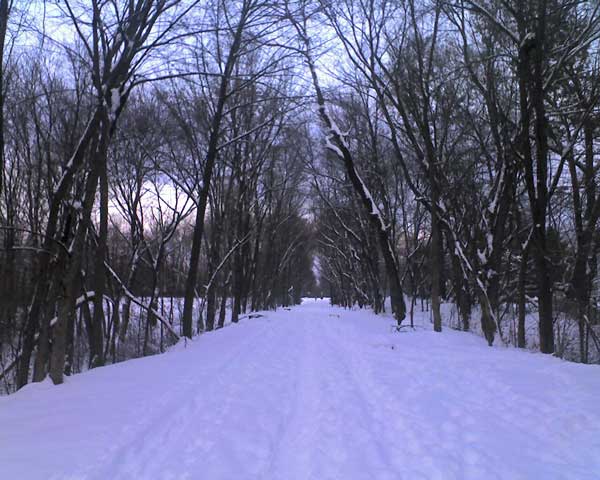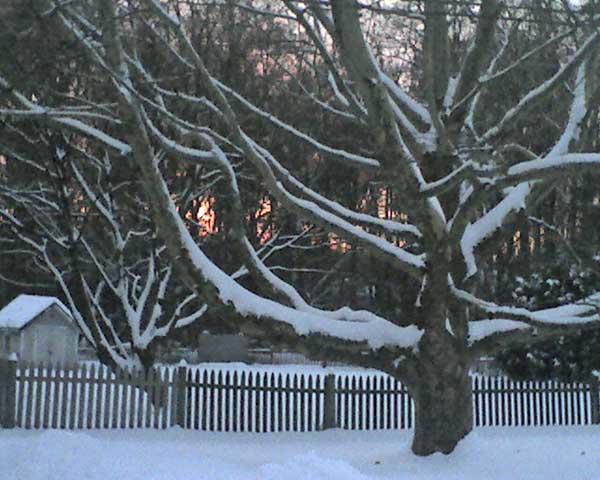Today’s Gazette features Virginia Otis’s monthly column about nature…
“Go to the winter woods. There is nothing more beautiful than the forest clothed to its very hollows in snow,” wrote Fiona MacLeod in “Where The Forest Murmurs.” (1906) It is an invitation to go snowshoeing, skiiing, or hiking on snowmobile trails to see that clean beauty all around and to breathe the cold, purifying air into our lungs…
In winter the hardwood trees are revealed in their nakedness, their upper [limbs] a lacy pattern against the sky. In the woods the russet and pallid gold of unshed beech leaves seem colorful against the gray trunks of trees and the dead white of snow. The sun’s light caresses the boles of trees and changes the hemlock’s dusky foliage to a golden green…
…the ice storm is revealed in its crystalline beauty. We walk along the road in awe, studying the changing colors of frozen prisms on the twigs of bushes and trees. They are like Jewels…rubies, sapphires, and emeralds, set off by silver and gold…
See also:
Photo Essay: Our Woods in Winter


Photo Essay: Millyard Brook Swells with Water in Winter
Photo Essay: The Forest Behind View Avenue
The Nature of Northampton: Henry James and Tracy Kidder
Henry James, writing in Roderick Hudson
Rowland watched the shadows on Mount Holyoke, listened to the gurgle of the river, and sniffed the balsam of the pines. A gentle breeze had begun to tickle their summits, and brought the smell of the mown grass across from the elm-dotted river meadows. He sat up beside his companion and looked away at the far-spreading view. It seemed to him beautiful, and suddenly a strange feeling of prospective regret took possession of him. Something seemed to tell him that later, in a foreign land, he would remember it lovingly and penitently.
Tracy Kidder, interview with Marianne Doezema
In fact, continuity is one of the things I like about New England. I grew up on Long Island in the 1950s, and the place where I was raised has essentially vanished. It was bulldozed. For me it’s reassuring that my “replacement” home has changed less. In fact, we know that over the last 150 years quite dramatic changes have occurred—almost every tree was cut at one time, for example—but the landscape has returned in many respects to the way it was in the early 19th century…
…[the mountains and old buildings] served as reminders that these things were here before you and will be here after you’re gone. The geographic features, especially, give you a sense of your own place in the world and in time.
UMass Press: “Natural Land: Preserving and Funding Open Space”
Protecting open space is often about protecting what makes a community special and unique… At the small-town or village scale, a forested hillside or surrounding farmland helps create a unique sense of place. Furthermore, preserving open space helps to create distinct edges that stop the blurring of community boundaries that is characteristic of urban sprawl. Defining what is unique about one’s community and identifying places that are special to local residents is an important part of the overall planning process (Hester 1990)…
Greening Smart Growth: The Sustainable Sites Initiative
Physiological functions, the core processes of our bodies, are positively affected by experiences with nature. For example, hospital patients who have a view of natural landscapes (as opposed to built structures) recover faster from surgery and require less pain medication.[40] In addition, heart rate, blood pressure, and other measures return to normal levels more quickly when people view natural rather than urban landscapes after a stressful experience.[41]
…Shared green spaces, particularly those with trees, provide settings for people to interact and strengthen social ties.
Irony of Infill: You Have to Drive to Enjoy Nature
Poem: “We Have Faith”